Antoni Gaudí was a Spanish architect and designer from Catalonia, known as the greatest exponent of Catalan Modernism. One of his most famous and often-repeated phrases was, ‘originality is returning to the origin.’ For Gaudi, a deeply religious man, this origin was nature. Gaudi viewed the natural world as perfect, a creation from which he drew inspiration. Even today, architects take cues from his bespoke creations nature-based.
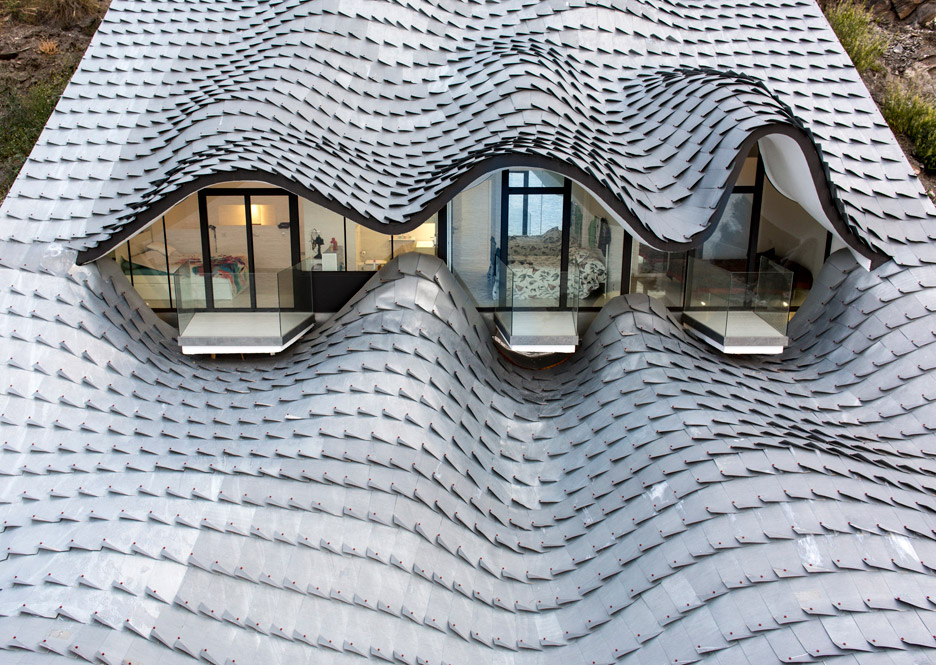
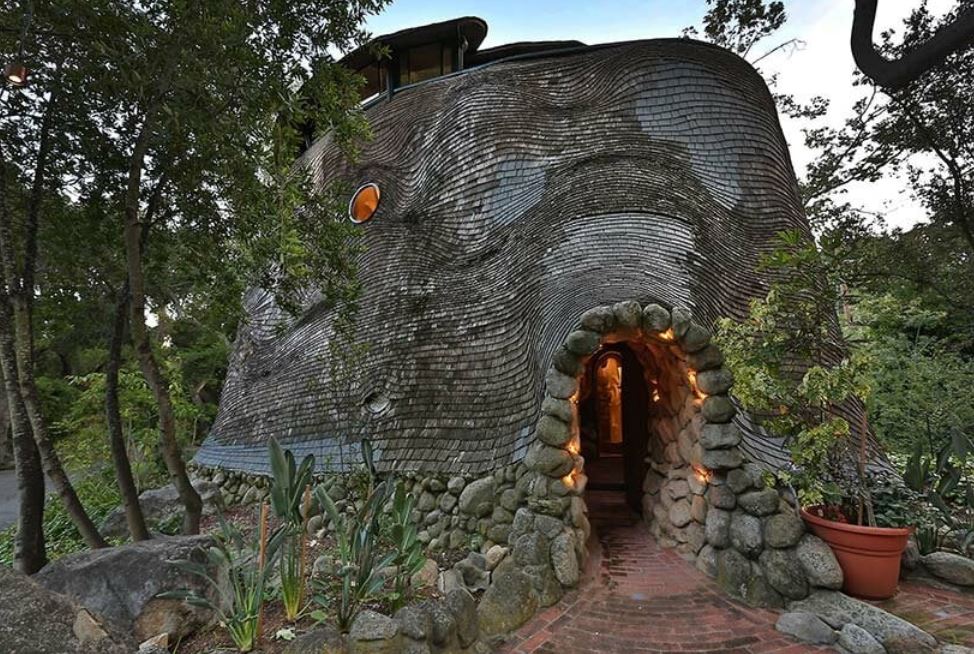
Whale House by Michael Carmichael (via designboom)
Completed in 1978 among ancient oak and sycamore trees in Santa Barbara, California, the so-called Whale House was envisioned by its original owner, imaginative architect Michael Carmichael as a home that tells the story of a whale swallowing a ship.
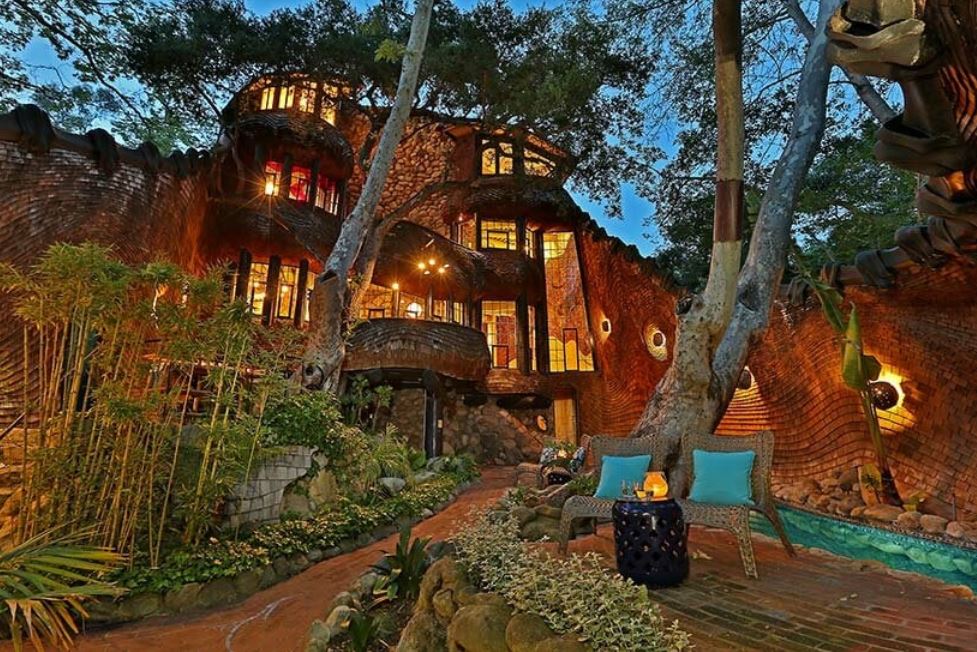
Whale House by Michael Carmichael (via designboom)
Inspired by Gaudi’s organic style, the residence does not include a single straight line anywhere. This influence can be read clearly through the home’s billowing forms, a skin of undulating cedar shingles and curving walls covered in hand-molded Venetian plaster and massive river rocks.
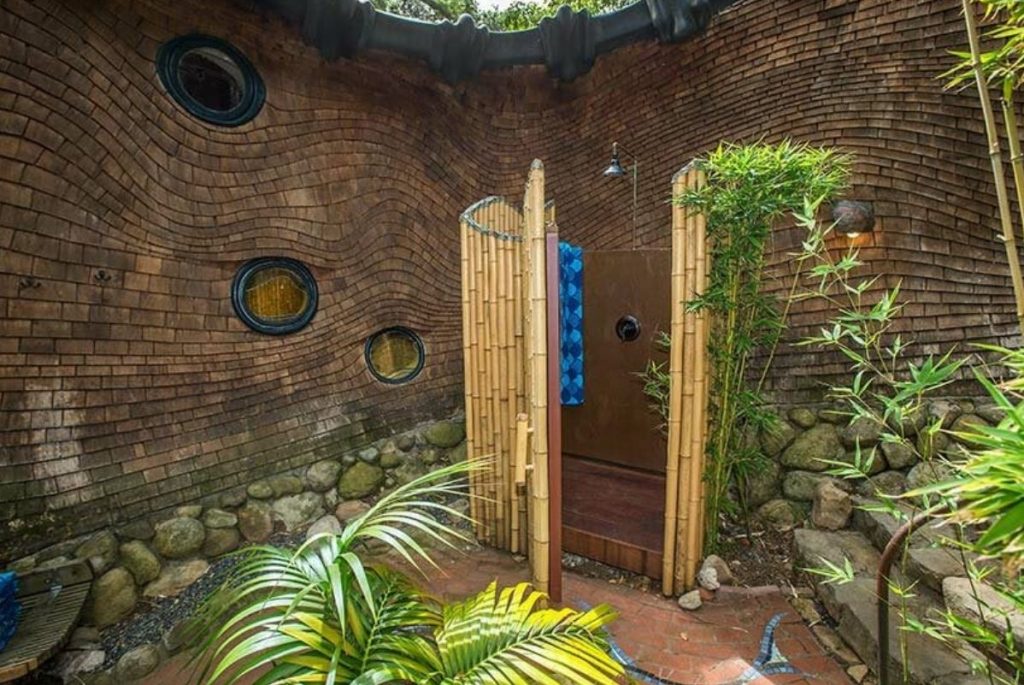
Whale House by Michael Carmichael (via designboom)
The structure’s homogenous skin seems almost an extension of nature itself. Visitors are drawn inward through a unique entrance, which is sculpted to suggest the mouth of a whale. The property sports three bedrooms and three-and-a-half baths between the two-bedroom main house and the one-bedroom guesthouse.
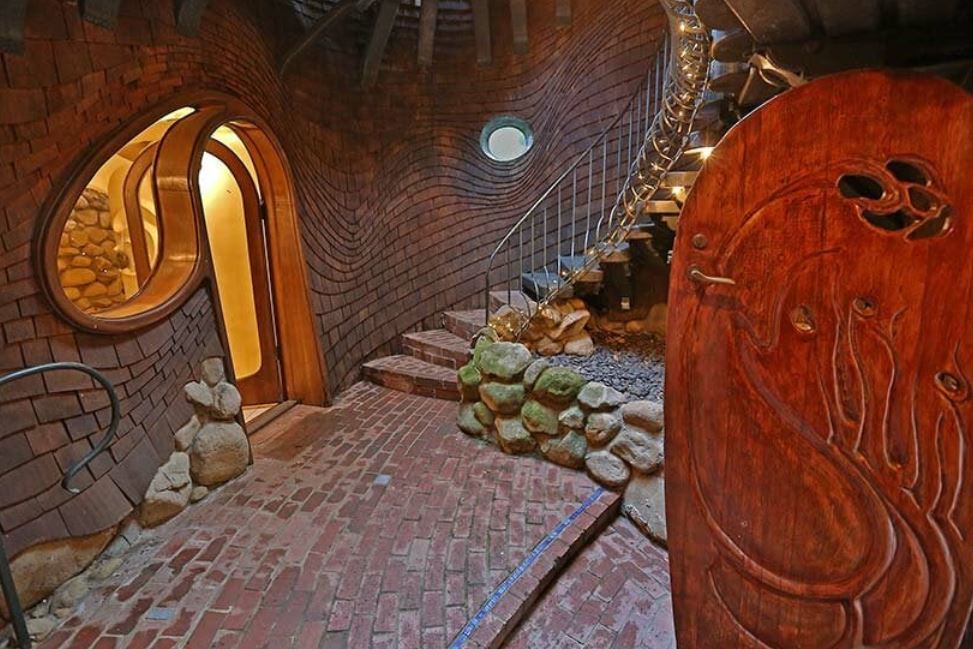
Whale House by Michael Carmichael (via designboom)
Inside, there is a series of psychedelic spaces arranged over three floors, each revealing unexpected moments of organic architecture — including a rock-covered elevator shaft, 270 Belgian leaded and stained-glass windows, enormous wood columns and beams, and a spiraling stairwell that connects the interiors with the fresh outdoors beyond.
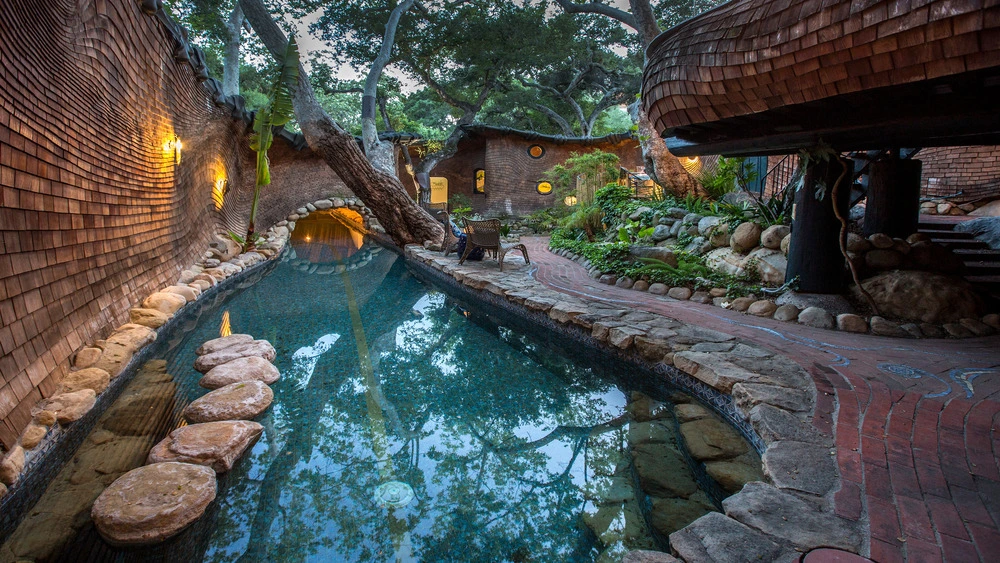
Whale House by Michael Carmichael (via designboom)
Other noteworthy elements to be discovered include an interior bamboo courtyard, an outdoor shower, and a 75-foot lap pool that flows into the grotto of the whale’s tail.
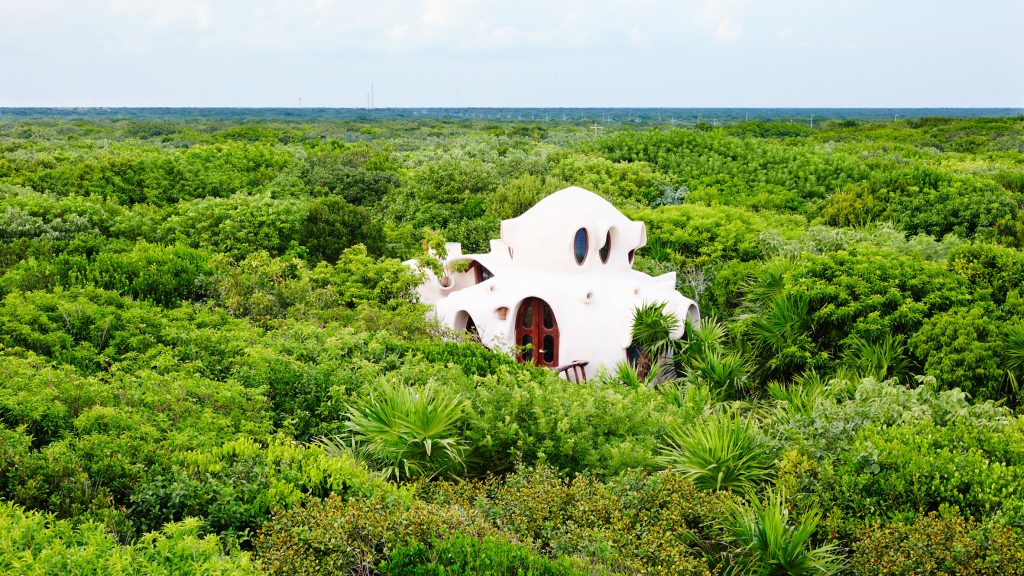
Papaya Playa Project by Design Hotels
Emilio Heredia, who has been responsible for the architecture of all the buildings in Papaya Playa Project, an eco-hotel operated by design hotels in in Tulum, Mexico, was also influenced by the famous Catalan architect when he created a sculptural treehouse, which is conceived as an addition to the resort.

Papaya Playa Project by Design Hotels
Raised up high on chunky wooden stilts, the Treehouse has curved form reminiscent of Gaudí’s organic shapes. Elevating the structure encourages the growth of jungle plants around the treehouse and ensures the building does not interfere with nature. In such a way, the architect wanted to show the upmost respect to all the flora and fauna living in the jungle.
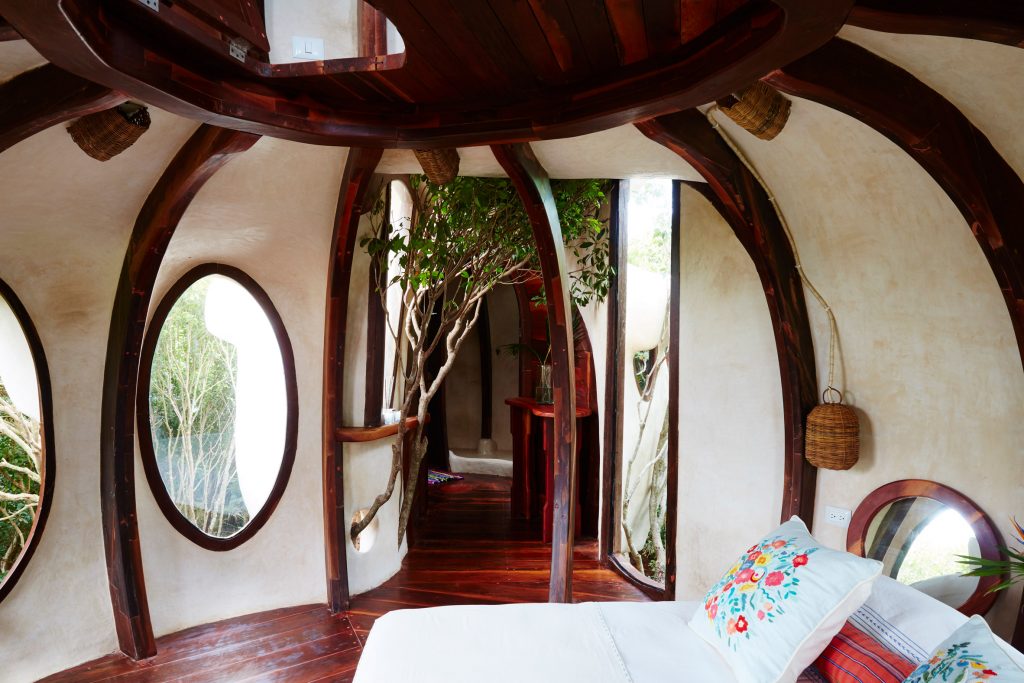
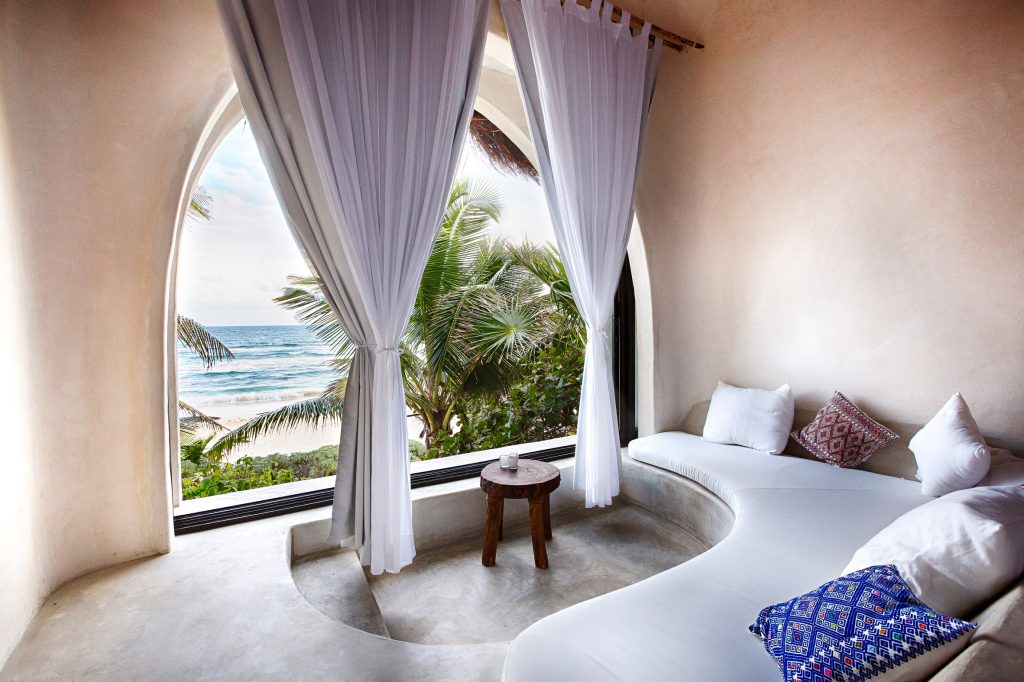
Papaya Playa Project by Design Hotels
Visitors can access the treehouse via a winding carved staircase that ascends past a seating area before reaching the upper level. Inside, the compact structure has enough space for a double bed and a cosy bathroom, as well as a tiny attic, which serves as a meditation room and can be accessed by ladder. Tree branches erupt through the walls of the house before breaking through the roof.
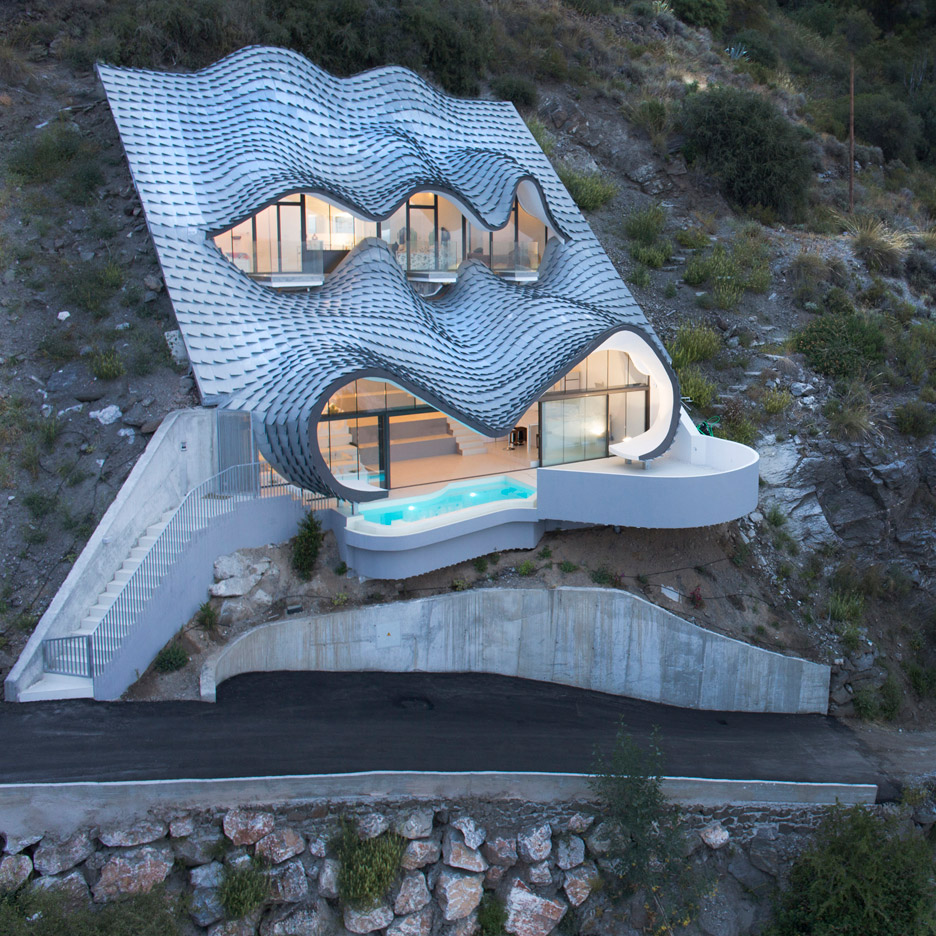
House on the Cliff by Gilbartolome Architects (also header image)
The property called House on the Cliff was designed by Madrid practice GilBartolomé Architects for a young couple who bought a difficult plot on a steep cliff overlooking the Mediterranean Sea in Spain’s Granada province, which has a steep inclination of 42 degrees. The task has been to integrate the house within the magnificent landscape that surrounds it and to direct the livable spaces towards the sea.
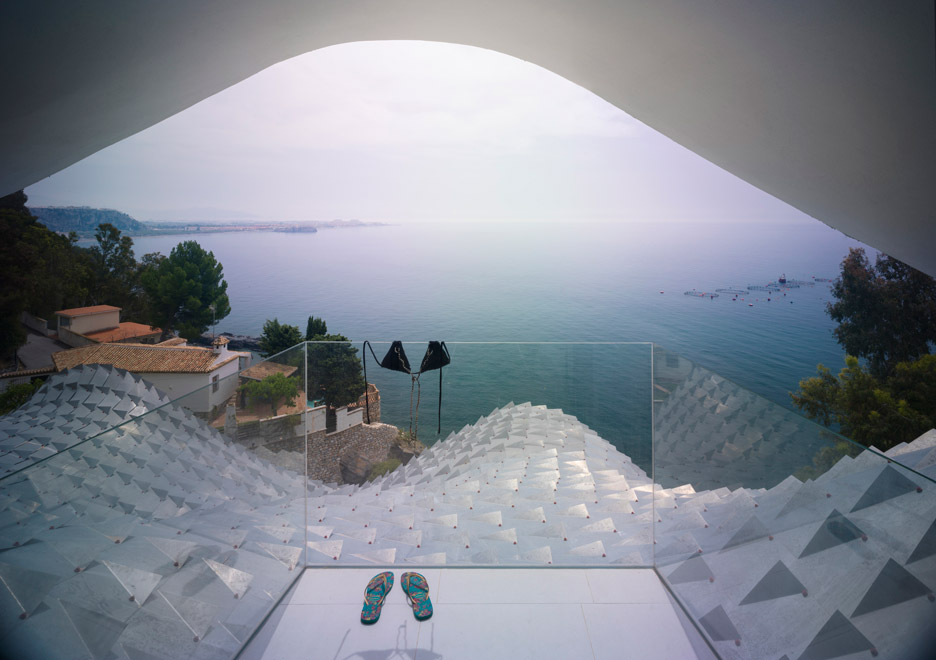
House on the Cliff by Gilbartolome Architects
The resulting two-storey residence is largely buried in the ground and covered by an undulating zinc-covered roof. The roof is formed from a double concrete shell and is supported by retaining walls spaced 14.5 metres from each other, leaving the interior column free. The form creates a cavernous interior described by the architects as a “Gaudiesque contemporary cave”.
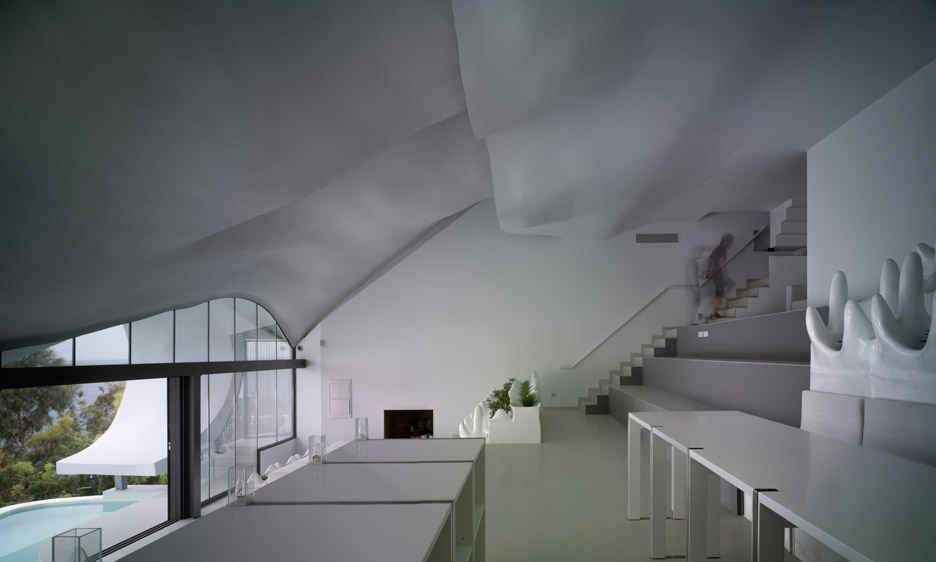


House on the Cliff by Gilbartolome Architects
According to the architects, the form of the house and the metallic roof produces a calculated aesthetic ambiguity between the natural and the artificial, between the skin of a dragon set in the ground when seen from below, and the waves of the sea when seen from above.
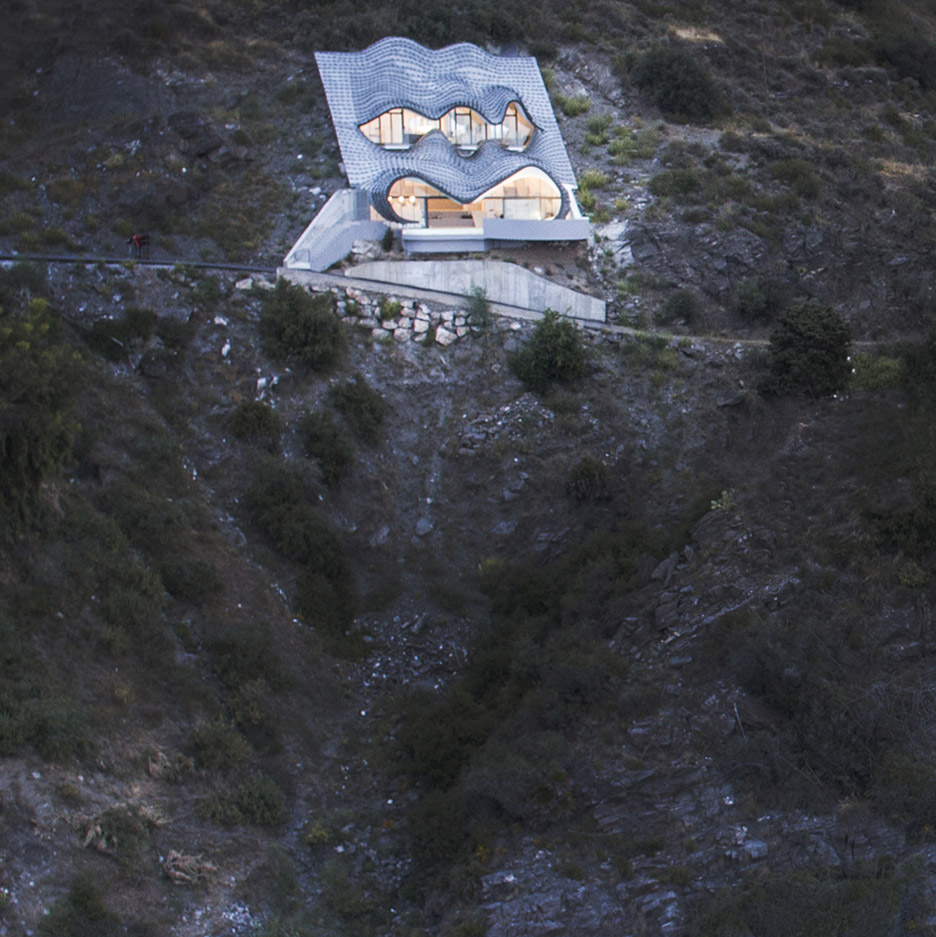
House on the Cliff by Gilbartolome Architects
Constructed in 2015 during Spain’s financial crisis and high unemployment levels, the decision was made to avoid machine-made industrial construction systems and develop an architecture that is based on many hours of labour. As a result, the reinforced concrete roof structure, handmade zinc tiles and gypsum plaster are moulded around a formwork of metal mesh developed by local engineer Manuel Rojas. The use of these techniques that jump between the manual and the digital shows that another construction is possible and that the developer and the user have the possibility of obtaining a better product at an affordable cost.
Looks like Gaudi’s work lives on, doesn’t it?